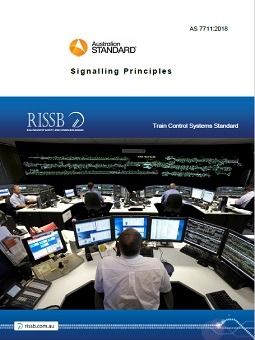This Standard specifies the principles for railway signalling systems.
This Standard is applicable to heavy railways. This Standard is not generally applicable to light railways, monorails, inclined railways, tramways and other railways to which Rail Safety National Law does not apply.
Train control systems include people, procedures and technology. The procedures and technology together form the system of safeworking. This Standard is applicable to the technology (i.e. the signalling system) and its interfaces with people and procedures. The signalling system could include components that are infrastructure-based and components that are train-borne.
This Standard is applicable to systems of safeworking that rely upon train detection systems. Train detection systems include track circuits, axle counters, treadles and train-borne positioning systems. This Standard is not generally applicable to systems of safeworking that do not rely upon train detection systems, such as staff and ticket, electric staff and train order working.
This Standard is applicable to power operated signalling systems, including power operated lineside signals and in-cab signals. This Standard is not generally applicable to mechanically operated signalling systems, such as mechanically operated lineside signals, except where the mechanically operated equipment is included as part of a power operated signalling system (for instance, mechanical ground frames that are released by a power operated signalling system).
This Standard does not address the processes and competences for the design, construction and implementation, commissioning, monitoring and maintenance, modification, or decommissioning and disposal of a signalling system.




